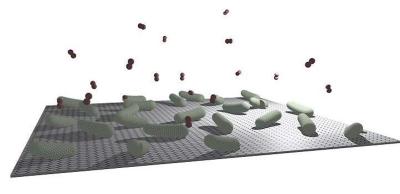Researchers from KAUST show that microbes and nanomaterials like graphene can be used together to form a biohybrid material that performs well as an electrocatalyst. The team says that such materials could be used in the solar-powered production of carbon-free fuels and several other green-energy applications.

A process called the oxygen-evolution reaction (OER) is at the heart of many clean energy technologies. In the case of solar-fuel production, for example, the OER enables the use of solar electricity to split water molecules into oxygen and hydrogen, producing clean hydrogen that can be used as a fuel. Currently, rare and expensive metals are used as OER electrocatalysts. However, graphene-based biohybrid materials could make an inexpensive, eco-friendly alternative, as the team at KAUST has shown.
When the team mixed the bacterium and the graphene oxide under oxygen-free conditions, the bacterial cells adhere to the surface and produce iron-rich proteins to interact biochemically with the graphene oxide as part of their natural metabolism. As a result, the reduced graphene oxide ends up decorated with iron, copper and sulfur; thereby, becoming a highly efficient OER electrocatalyst.
"The elements contributed by the bacterium transformed the catalytically inert graphene into a highly electrocatalytic one," says Kalathil. "The biohybrid material's OER activity outperformed the benchmark expensive metal-based OER catalysts," he adds. The bonus is the environmentally friendly method the team used to make it.
The team is now working on large-scale production and commercialization of this biohybrid catalyst and developing other types of biohybrid catalyst for other important electro-catalytic reactions, such as hydrogen-evolution reaction and carbon-dioxide reduction.



